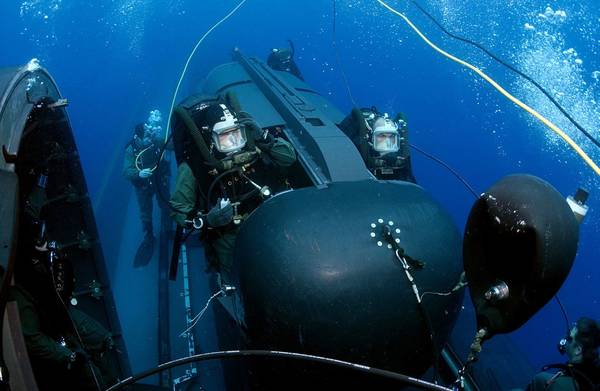
Sonardyne International Ltd. launched its new Navigation and Obstacle Avoidance Sonar (NOAS) at NAVDEX 2013 in Abu Dhabi.
Designed for use on submersible vehicles, NOAS enables faster, safer and more efficient navigation by detecting and classifying potentially hazardous underwater obstacles in its path.
Unveiled on the first day of the exhibition, NOAS provides a unique combination of very long range 2D navigation performance, 3D object detection and class leading intruder detection in a single compact sonar. In 2D mode NOAS provides the crucial long range navigation information enabling underwater vessels to steer a safe course. When combined with its 3D capability, the sonar scans the water column to enable more detailed detection and classification of obstacles, and the seabed, in front of the vessel.
The first in a family of products, NOAS has been specifically developed for installation on manned submersibles and swimmer delivery vehicles (SDVs) where available space and power is often restricted. With this in mind, the compact subsea housing contains the 2D array, front-end electronics and processing whilst a separate projector is used if the optional 3D capability is required. NOAS feeds fully-processed sonar images to, and is controlled by, the host platforms own control system, allowing the user to customise the operator displays to meet the specific needs of the platform and its operational requirements.
Speaking at the launch, Rob Balloch, Strategic Development and Marketing Director at Sonardyne said, Conventional obstacle avoidance sonars have an operating range of just a few hundred metres so their use is often limited to navigating an SDV or submersible during its final approach to the target. With a range of 1,500 metres and a wide field of view, NOAS redefines the capabilities of forward look sonar technology, allowing pilots to navigate their vehicles at speed with confidence and accuracy.
NOAS has been engineered by the same team that developed the companys market leading Sentinel diver detection sonar and this capability has also been incorporated into the system. When the vessel is at a standstill or moving slowly, NOAS continuously monitors the surrounding area for underwater targets and the potential threat they present. The low false alarm detection capabilities of NOAS ensure that only genuine tracks with threatening intent are displayed.



